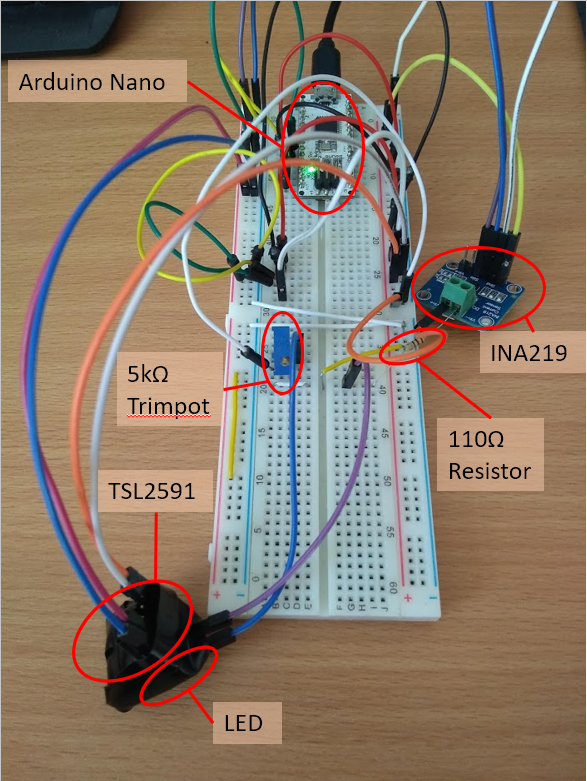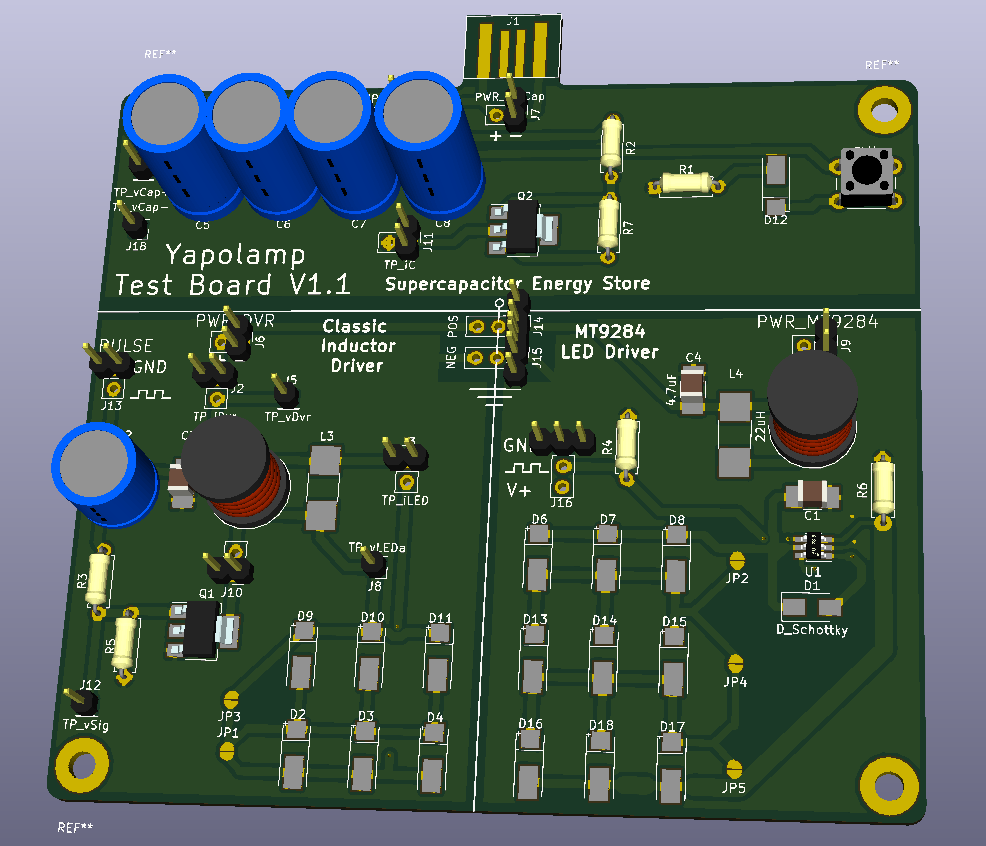Updates:
- I looked into a charge pump as an LED driver. I concluded we'd waste too much energy unless we bought several MOSFETS, especially as the losses associated with diode voltage drops would be significant at the low voltage of our storage medium.
- I looked at a "proper" LED driver chip, the MT9284, which seems to be a design offered under different part numbers by at least three different vendors. These chips do the boost for you to up to 7 LEDs in series, if you give them an inductor, Schottky diode and some caps. They claim high efficiency (c. 90%) but across the voltage range of 2.2 - 5V fixed feedback resistors struggle to provide a constant current. Also, unsurprisingly, the greater the number of LEDs in series, the lower the current they appear to provide. I'll explain a bit more in another log.
- I have ordered a single PCB to test the "original" inductor flyback driver that Tritiled and Yapolamp V1/beta use and compare against the purpose-built MT9284 LED driver.
Getting closer to an LED "Arb" Rating
For this log, the main information is the result of an efficiency test for the "yellow" (orange) LEDs I'm using in Yapolamp. In previous logs I have described why these are a nice colour for a night light (warm, don't spoil night vision, comforting if you grew up with a high pressure sodium street lamp shining through your bedroom window, don't damage your eyes much...). We're going to stick with them for the foreseeable.
The LEDs in question are the Chanzon jobs:

They have a claimed spec of:
- Size:5.7 X 3.0 (mm)
- Emitting Color: Yellow (588-592nm)
- Luminous Intensity: 1000-1500mcd
- Viewing Angle: 120 Degree
- Forward Voltage / Current: 2V-2.2V | 60mA
Test bed
@Ted Yapo properly characterised LEDs for #TritiLED in Arbs but I have used more of a lash-up rig to find the peak efficiency of these Chanzon yellow LEDs. I taped the LED to the TSL2591 light sensor with a 5mm piece of acrylic/HIPS between them and covered the pair in black electrical tape to reduce interference from outside the LED. An INA219 was pressed into "high precision, reduced range (400mA max)" mode to measure the current from 0.8mA to 26mA, set by a trimpot and fixed resistor in series.

Which yielded the following results:

So rather strangely the light output (yellow data points) started to drop off after 13mA and the peak efficiency (blue data points) appears to be in an elongated region between 6 - 12mA. This is in line with Ted's observations that peak efficiency is balanced with "cost of die area" in LED economics to produce the higher recommended current ratings; 60mA in this case. The broad magnitude range of 6-12mA for the high efficiency zone bodes well for achieving the "peak sawtooth" efficiency that Ted calculated for Tritiled.
Sorry, I didn't have time to convert results into the internationally recognised unit of Arbs that such a lash-up measurement rig deserves.
Please jump into the discussions for any handy observations or tips about how you go about calculating or designing that "peak sawtooth".
Super Power
You may have guessed but the plan for this version of Yapolamp is to use supercaps as the energy store. Initial tests and spec sheet leakage figures seem like they'd fit the use cases of short run times at high brightness and longer term low-glow levels so the torch can be found in the dark. By adding a transistor based constant-current charging circuit and an anti-backfeed Schottky, we could let the (young) user recharge in under 30 seconds using a USB battery pack and run for many minutes at full brightness, even after a few days in "always on" standby mode.
Here's an unfettled image of the test board I ordered, from the Kicad 3D viewer.

PS, the purpose built LED driver ICs are ~$0.05 each in qty 1-10 so they are potentially a really good option for many other LED circuits.
 Simon Merrett
Simon Merrett
Discussions
Become a Hackaday.io Member
Create an account to leave a comment. Already have an account? Log In.
I had some success with the MT9284 driving a 1W 9V Bridgelux LED. Efficiency was measured between 1mA and 20mA and is in line with the datasheet. However, the datasheet does not explicitly state what the maximum LED current is. The graphs hint that 20mA is the maximum but I'm trying to get 100mA. Has anyone had any success at getting 50mA or more through their LED string?
Are you sure? yes | no
Hi @richard sorry but I have not tried that driver at higher currents.
Are you sure? yes | no
I just successfully pushed 80mA through a single Bridgelux device. No issues noted.
Are you sure? yes | no
Thanks for the update @richard . What inductor are you using?
Are you sure? yes | no
This 22uH inductor is what I used : https://lcsc.com/product-detail/Power-Inductors_Yanchuang-SCCD43-220KT_C532863.html
Are you sure? yes | no
@richard thanks for the inductor link
Are you sure? yes | no
>PS, the purpose built LED driver ICs are ~$0.05 each in qty 1-10
Could you provide some links to vendors of the MT1284?
Are you sure? yes | no
https://lcsc.com/product-detail/LED-Drivers_MT9284CS6_C181786.html is what I have. Although this offering looks to be pretty much the same: https://lcsc.com/product-detail/_RYCHIP-Semiconductor-Inc-RY3730_C370887.html and is closer to the price I mentioned (may have been thinking in £GBP rather than $US).
Are you sure? yes | no
Thanks!
Are you sure? yes | no